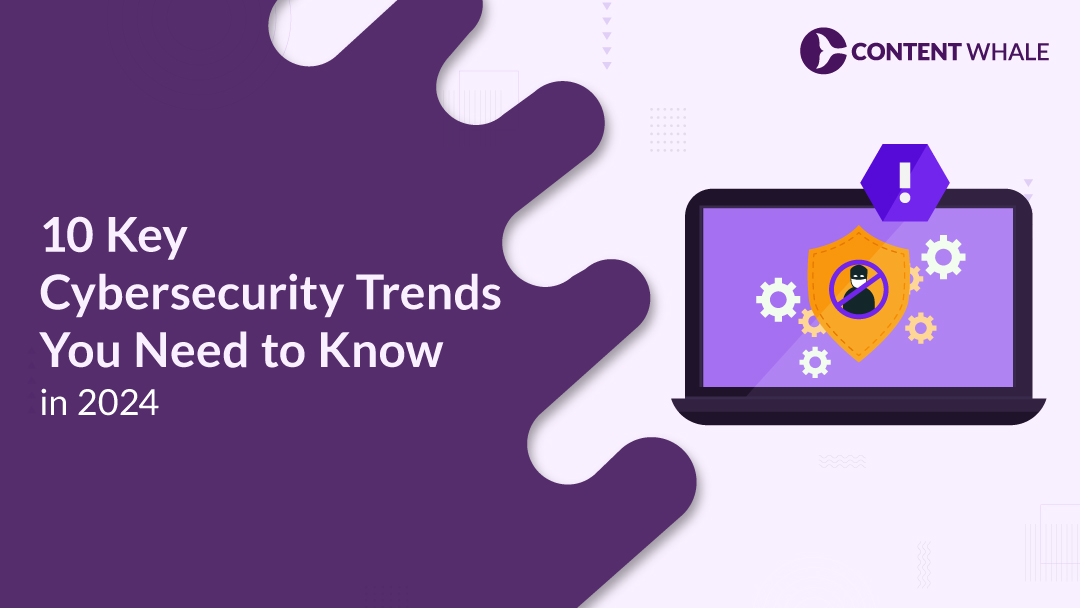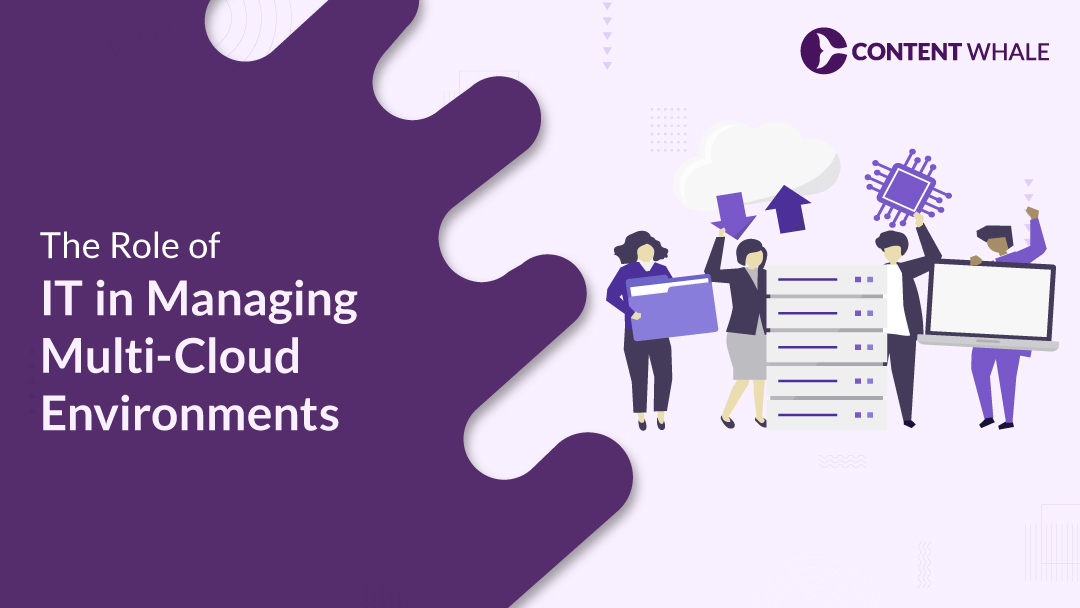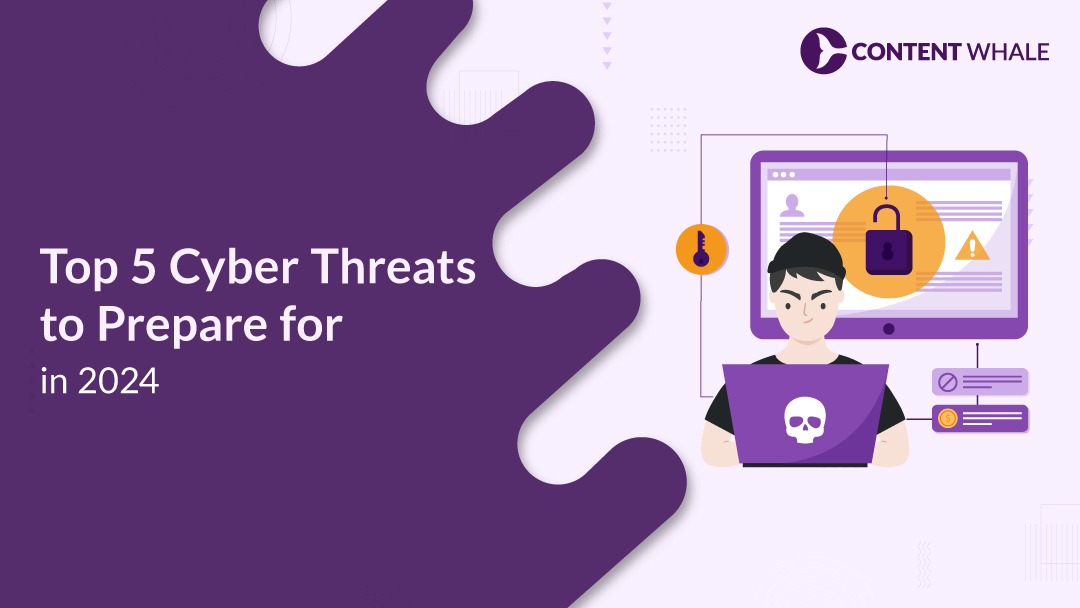Cybersecurity is evolving at a fast pace, with new threats and defenses emerging every year. Staying updated on cybersecurity trends 2024 is essential for businesses and individuals to protect sensitive data from rising risks.
As we approach 2024, technologies like AI, IoT, and cloud computing are driving 2024 cybersecurity innovations. The ability to predict, detect, and respond to threats in real-time is more critical than ever.
Keeping an eye on these emerging cybersecurity trends ensures your security measures remain effective and up-to-date. Let’s dive into the key cybersecurity updates that will dominate 2024.
1. AI and Machine Learning in Cybersecurity
Artificial intelligence (AI) is transforming how companies approach cybersecurity. AI in cybersecurity enables faster threat detection and more precise response strategies, significantly reducing the impact of cyberattacks. With machine learning, systems can automatically analyze patterns and detect anomalies, helping businesses predict potential threats before they happen.
Cybersecurity trends 2024 highlight AI’s growing role in threat detection in 2024. Real-time data analytics powered by AI helps cybersecurity teams respond faster and more accurately. Machine learning algorithms continuously evolve, identifying new attack methods and improving defenses over time.
- AI automated threat detection, reducing human error.
- Real-time analysis allows quicker decision-making and faster response times.
- Machine learning algorithms improve predictive capabilities, keeping up with cybersecurity challenges.
2. Zero Trust Architecture Adoption
With cyber threats becoming more sophisticated, the Zero Trust Architecture is gaining significant traction. Zero Trust operates on the principle of “never trust, always verify,” ensuring that no user or device, inside or outside the organization, is trusted by default. As businesses shift to remote and hybrid work environments, the need for cybersecurity updates like Zero Trust has intensified.
Key aspects driving Zero Trust’s adoption in cybersecurity trends 2024 include:
- Data protection trends emphasize the need to protect data across distributed networks.
- Zero Trust mitigates the risks associated with remote access by enforcing strict identity verification.
- Businesses are increasingly implementing Zero Trust to secure cloud environments, safeguarding cloud security trends.
| # | Benefit | Description |
| 1 | Enhanced Security | Continuous validation reduces breach risks from both external and internal threats. |
| 2 | Adaptability | Easily adapts to new technologies, remote work, and evolving security needs. |
| 3 | Regulatory Compliance | Helps meet GDPR, CCPA, and other regulations with strong data protection and access control. |
| 4 | Reduced Attack Surface | Microsegmentation limits the movement of threats within the network. |
| 5 | Improved Visibility | Continuous monitoring provides real-time insights for faster threat detection. |
3. Cloud Security Innovations
As cloud adoption continues to rise, cloud security trends are evolving to address new challenges. Businesses now depend on cloud environments to store sensitive data and run critical applications, making robust security measures essential. The shift towards multi-cloud strategies adds complexity, requiring organizations to secure multiple platforms simultaneously.
Key cybersecurity trends 2024 highlight the following 2024 cybersecurity innovations in cloud security:
- AI in cybersecurity is used to monitor cloud infrastructures in real time, identifying threats and reducing response times.
- Encryption and identity management solutions are becoming more sophisticated to protect against unauthorized access.
- Businesses are adopting secure APIs to ensure safe communication between cloud services and applications.
4. IoT Vulnerabilities and Security Solutions
The rapid expansion of the Internet of Things (IoT) is creating new cybersecurity challenges as more devices become connected. With billions of IoT devices in use globally, the attack surface is growing, making these devices prime targets for cybercriminals. Many IoT devices lack strong security protocols, creating vulnerabilities that can lead to data breaches and network intrusions.
Key cybersecurity trends 2024 address these risks by focusing on innovative security solutions:
- AI in cybersecurity is being deployed to monitor IoT networks, identifying unusual behavior and preventing attacks before they escalate.
- Strong encryption and regular firmware updates are becoming standard practices to secure IoT ecosystems.
- New 2024 cybersecurity innovations include the use of secure communication protocols to prevent unauthorized access.
5. Advanced Persistent Threats (APTs) and Nation-State Actors
Advanced Persistent Threats (APTs) continue to evolve, often driven by nation-state actors with sophisticated cyber capabilities. APTs are highly organized, long-term attacks that aim to infiltrate sensitive systems without detection. These cyberattacks target critical sectors like defense, healthcare, and finance, causing significant disruptions.
Key cybersecurity trends 2024 point toward growing concerns over these threats:
- APTs use stealth techniques to remain undetected, making threat detection in 2024 more challenging.
- Nation-state actors increasingly engage in cyber espionage, seeking to compromise critical infrastructure or steal intellectual property.
- AI-powered threat intelligence platforms are emerging to detect and counter APTs more efficiently, representing one of the significant 2024 cybersecurity innovations.
6. Increased Focus on Data Privacy
With the rise of global data regulations like GDPR and CCPA, the emphasis on data protection trends has intensified. In 2024, businesses face mounting pressure to prioritize data privacy and protect consumer information from unauthorized access or misuse.
Several cybersecurity trends 2024 point to enhanced privacy measures:
- Stricter enforcement of data privacy laws worldwide is driving companies to re-evaluate their data handling practices.
- Businesses are implementing encryption and anonymization techniques to secure sensitive information.
- AI in cybersecurity plays a growing role in detecting privacy breaches early, reducing potential damage.
| # | Issue | Resolution |
| 1 | Increased Data Breaches | Implement encryption, conduct regular security audits, and use AI to detect and prevent breaches early. |
| 2 | Complex Regulatory Compliance | Stay updated on global data privacy laws and use automated tools to ensure compliance across jurisdictions. |
| 3 | Biometric Data Misuse | Strengthen consent protocols for biometric data collection and use encryption to secure sensitive data. |
| 4 | Consumer Data Monetization | Provide users with control over their data, including options to access, delete, or opt-out of data sharing. |
| 5 | Lack of Transparency in Data Use | Use clear privacy policies and ensure transparency by providing regular data usage reports to users. |
7. Security in Remote Work Environments
The shift to remote and hybrid work models has introduced new cybersecurity challenges. As employees access company data from various locations and devices, securing remote work environments has become a priority for businesses in 2024.
Key cybersecurity trends 2024 focus on addressing these challenges:
- Companies are adopting advanced tools like VPNs, multi-factor authentication (MFA), and secure access gateways to ensure safe remote connections.
- Cloud security trends emphasize protecting remote work infrastructures that rely heavily on cloud services for data storage and communication.
- Regular employee training is becoming an essential practice to minimize human error and prevent potential cyberattacks.
8. Quantum Computing and Its Security Implications
Quantum computing is one of the most talked-about emerging cybersecurity trends. While it promises breakthroughs in computational power, it also poses significant threats to existing encryption methods. Quantum computers can potentially crack traditional encryption algorithms, creating a major cybersecurity challenge for industries reliant on data protection.
Key cybersecurity trends 2024 highlight the need for businesses to prepare for these shifts:
- Quantum-resistant encryption techniques are under development, aiming to safeguard sensitive data from quantum-based attacks.
- AI in cybersecurity is being leveraged to predict and mitigate potential threats posed by quantum technologies.
- Governments and industries are investing in quantum research to stay ahead of the curve, ensuring their systems can withstand future quantum-based breaches.
9. Blockchain for Enhanced Security
Blockchain technology is increasingly being viewed as a game-changer in cybersecurity. Its decentralized nature makes it highly resistant to data tampering, offering robust protection against cyber threats. As part of cybersecurity trends 2024, businesses are turning to blockchain to enhance data integrity and security.
Key 2024 cybersecurity innovations using blockchain include:
- Data protection trends emphasize blockchain’s ability to secure digital transactions and identities. By ensuring data is encrypted and distributed across multiple nodes, blockchain mitigates risks of unauthorized access.
- Blockchain technology is gaining momentum in fraud prevention, as it allows for secure and transparent tracking of digital assets.
- Smart contracts, powered by blockchain, are increasingly used to automate secure transactions, reducing vulnerabilities in financial and supply chain systems.
10. Threat Hunting and Cyber Resilience
Proactive threat detection in 2024 is no longer optional, making threat hunting an essential practice for modern businesses. Unlike reactive cybersecurity measures, threat hunting involves actively searching for hidden vulnerabilities and threats before they can cause harm.
As part of cybersecurity trends 2024, threat hunting focuses on:
- Continuous monitoring of networks for unusual activities, helping businesses stay ahead of cybersecurity challenges.
- Using AI in cybersecurity to automate the detection of advanced persistent threats (APTs) and other stealthy cyberattacks.
- Enhancing cyber resilience by incorporating threat intelligence into security operations, allowing for faster detection and response.
| # | Cybersecurity Trend | Key Features | Benefits |
| 1 | AI and Machine Learning | Automates threat detection, real-time data analytics, reduces human error. | Faster threat detection, improved accuracy, reduced human oversight, proactive defense. |
| 2 | Zero Trust Architecture | “Never trust, always verify” model, strict identity verification, secures remote access. | Stronger access control, minimizes insider threats, improved security for remote and hybrid workforces. |
| 3 | Cloud Security Innovations | Multi-cloud security, AI monitoring, enhanced encryption and identity management. | Secures multi-cloud environments, prevents unauthorized access, improves data protection. |
| 4 | IoT Vulnerabilities and Security Solutions | AI monitoring for IoT networks, encryption, secure communication protocols. | Reduces IoT-related vulnerabilities, improves monitoring, strengthens device security. |
| 5 | Advanced Persistent Threats (APTs) | Stealth techniques, nation-state involvement, AI-powered threat intelligence to detect APTs. | Identifies hidden and sophisticated threats, protects critical infrastructure from espionage attacks. |
| 6 | Increased Focus on Data Privacy | Stricter data privacy laws, encryption, anonymization, AI for early detection of privacy breaches. | Ensures compliance with regulations, improves consumer trust, reduces risks of data breaches. |
| 7 | Security in Remote Work Environments | VPNs, multi-factor authentication (MFA), cloud security, employee training. | Enhances remote work security, protects sensitive data, improves user authentication. |
| 8 | Quantum Computing and Its Security Implications | Quantum-resistant encryption, AI-driven threat mitigation, quantum research investment. | Future-proofs encryption, protects against quantum threats, secures sensitive information. |
| 9 | Blockchain for Enhanced Security | Decentralized data protection, fraud prevention, secure digital identity management. | Reduces fraud, secures digital transactions, enhances data integrity and transparency. |
| 10 | Threat Hunting and Cyber Resilience | Proactive threat detection, continuous monitoring, AI-enhanced cyber resilience. | Improves early threat detection, enhances response capabilities, strengthens overall cyber resilience. |
Conclusion
As businesses face new and evolving cyber threats, staying informed about cybersecurity trends 2024 is essential. From AI in cybersecurity to the adoption of Zero Trust Architecture and the rise of cloud security trends, each trend brings new cybersecurity challenges and solutions.
By keeping up with cybersecurity updates and embracing 2024 cybersecurity innovations, organizations can strengthen their defenses and remain resilient. Companies that proactively adopt these emerging cybersecurity trends will not only enhance their security posture but also protect their data, customers, and operations from growing cyber threats in the years ahead.
—
This blog is written by Content Whale to showcase our expertise in crafting content that ranks. If you’re looking to dominate your industry through high-quality, SEO-optimized content, just like we do, contact us today and let us help you achieve your ranking goals.
FAQs
1. What is Zero Trust Architecture in cybersecurity?
Zero Trust Architecture is a security model that assumes no user or device, inside or outside the network, should be trusted by default. It requires continuous verification of users, devices, and their actions, making it one of the prominent cybersecurity trends 2024 to combat modern threats in remote and cloud environments.
2. How does AI improve cybersecurity?
AI in cybersecurity enables faster and more accurate threat detection in 2024 by analyzing massive amounts of data and identifying anomalies that human analysts might miss. AI can also predict and block potential attacks before they occur, enhancing defense strategies against cybercriminals.
3. What are the risks associated with IoT devices?
IoT devices often lack built-in security measures, making them vulnerable to attacks. Hackers can exploit these weaknesses to gain access to networks or compromise sensitive data. Addressing IoT security remains one of the top cybersecurity challenges in 2024, as the number of connected devices continues to rise.
4. What role does blockchain play in cybersecurity?
Blockchain offers decentralized security solutions that protect data through encryption and distributed verification. It is being adopted to improve data integrity, prevent fraud, and secure digital identities, making it an important part of 2024 cybersecurity innovations.
5. How can businesses protect against Advanced Persistent Threats (APTs)?
To guard against APTs, businesses must adopt proactive defenses, including real-time monitoring, threat intelligence sharing, and AI in cybersecurity to detect and neutralize these sophisticated, long-term attacks. Regular cybersecurity updates and continuous threat hunting are also vital in mitigating APT risks.





